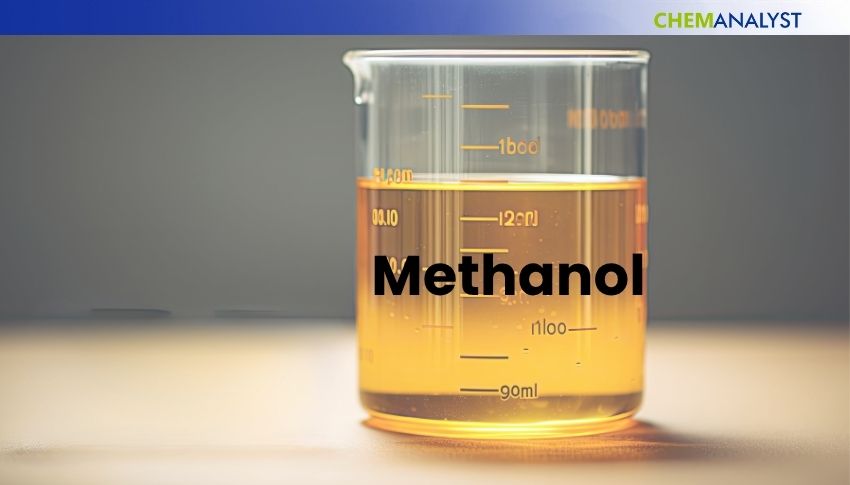Welcome To ChemAnalyst

During the first seven months of 2025, India’s methanol market has seen considerable changes and volatility in pricing as a result of domestic and global factors. Price volatility followed a roller coaster trend as a result of supply restrictions, political developments, seasonal demand changes, and regulatory issues.
Methanol CFR JNPT prices surged by 4.6% month-on-month in January, primarily due to increased futures trading and a spike in natural gas prices, the key methanol feedstock. Concerns over potential sanctions on Russian and Iranian supplies pushed Asian CFR futures higher. Despite production constraints during the Pongal holidays, domestic consumption rose, especially from formaldehyde and resin manufacturers. Traders were actively building inventories in anticipation of further price increases, while PETRONAS’ plant turnaround, affecting 1.67 million MT/year, further tightened Asian supply.
Methanol prices in India declined 2.8% month-on-month in February. Despite week-on-week gains driven by supply disruptions from Iran and Malaysia, rising natural gas costs, and renewed post-holiday demand, the overall trend was negative. The shutdown of Iran’s Zagros plant created supply concerns, but steady vessel arrivals in early February stabilized the market. However, late-February shortages triggered price volatility. Formaldehyde and resin sectors continued strong procurement, while bulk drug producers significantly reduced methanol consumption.
Prices jumped 11.2% month-on-month in March, led by early-month supply tightness, unplanned shutdowns, and continued concerns around Iranian shipments. Strong demand from paints and coatings also supported the price rise. However, prices fell steadily in the second half of the month due to resumed Iranian production and weak offtake from bulk drug manufacturers. Year-end financial closing and a wait-and-watch sentiment further subdued buying activity.
April saw a 14.0% month-on-month decline in methanol prices. Increased arrivals of Iranian cargoes and lower CFR China benchmarks pressured the market. While formaldehyde demand held steady, other downstream segments like amines, MTBE, and acetic acid remained weak. Traders held back purchases, anticipating further price corrections, while port inventories remained healthy but sluggish in liquidation.
Methanol prices dropped another 9.6% in May. Despite an early-month spike in offers and strong liquidation in Kandla driven by formaldehyde and bulk drug demand, bearish international cues and steady Iranian cargo flows pushed prices down. Mid-May monsoon onset impacted plywood and resin demand, and southern India saw sluggish trade activity.
Prices dropped 5.2% month-on-month in June, even as geopolitical tensions escalated. An Israeli drone strike on Iran’s South Pars gas field severely disrupted methanol shipments, triggering inventory buildup across India. While methanol prices rose week-on-week in mid-June, overall sentiment remained cautious due to port congestion, rising freight, and global supply chain concerns. Despite the shock, buyers anticipated a prolonged disruption and secured inventory aggressively.
Methanol prices fell by another 8.6% in July following the Indian government’s withdrawal of the 2019 BIS Quality Control Order. Despite a steady supply, downstream demand weakened, and port inventories rose as formaldehyde production declined during the monsoon. Bulk drug manufacturers remained cautious due to cheap cargo replacements, and market sentiment stayed bearish amid expectations of a supply glut.
India experienced a drop in methanol imports in Q1 2025, falling to an overall volume of 211,520 metric tons from 234,784 metric tons delivered in Q4 2024. This reduction is the result of softening local demand and high inventories. The nation’s methanol imports in Q1 2025 came predominantly from Saudi Arabia (84,437 MT), Oman (74,412 MT), Qatar (25,934 MT), and Bahrain (15,898 MT) – representing over 90% of the total. This pattern of imports reinforces India’s continued dependence on Middle Eastern sources for methanol, while evidence shows procurement trends to be weaker.
The methanol market in India in 2025 came together through a series of unexpected but consequential events - from regional plant outages, geopolitical disputes, seasonal demand shifts, and regulatory changes. While formaldehyde demand has offered some consistency, other segments have seen notable weakness. As we enter the second half of the year, traders and manufacturers are on the lookout for demand recovery signals and supply risks.
We use cookies to deliver the best possible experience on our website. To learn more, visit our Privacy Policy. By continuing to use this site or by closing this box, you consent to our use of cookies. More info.
